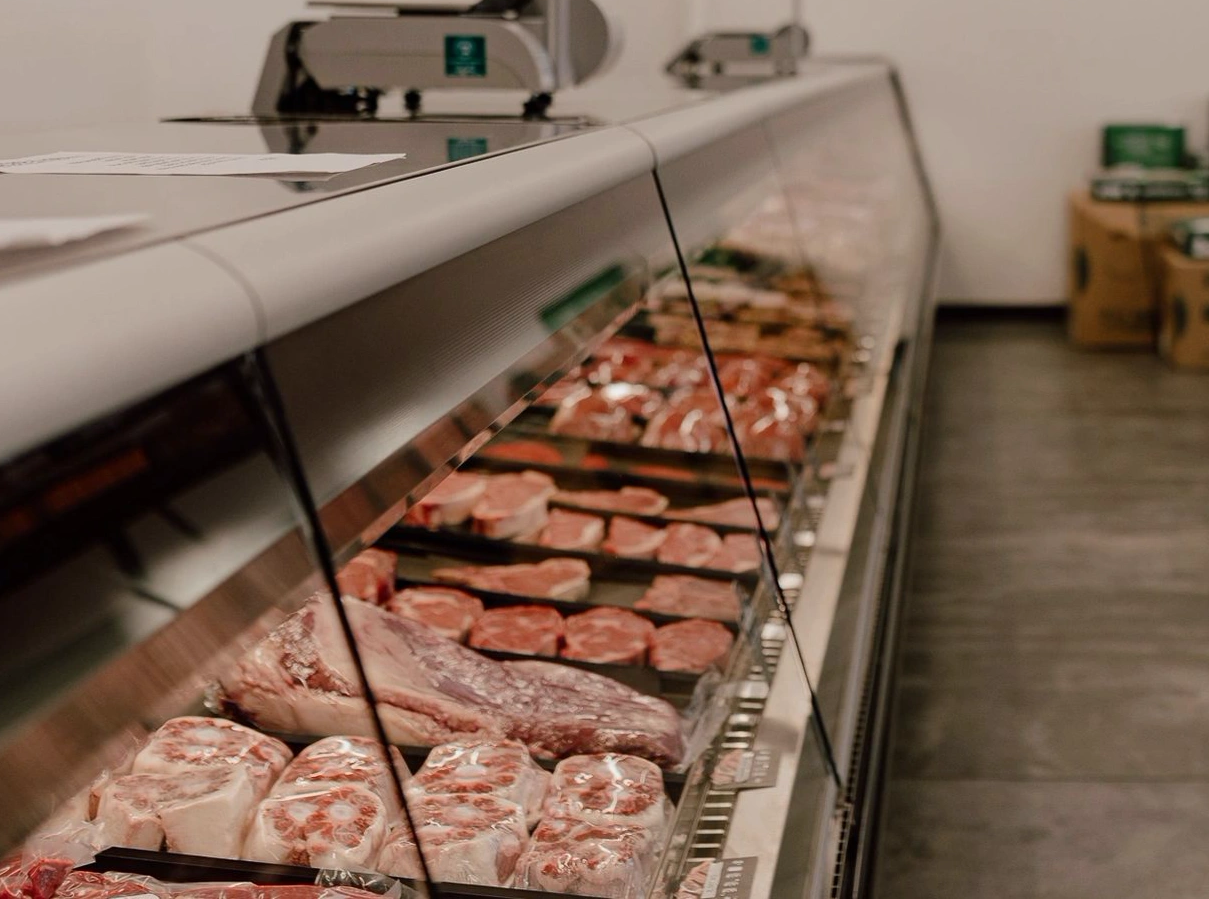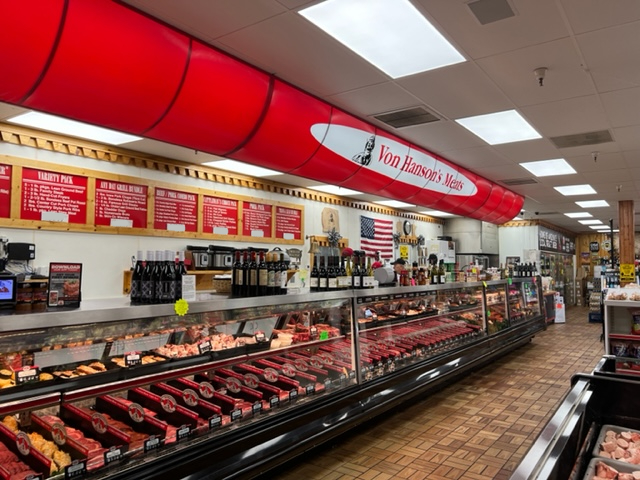Bagley Farms Meat Market Edwardsville IL: Your Relied On Resource for High-Quality Meats
Bagley Farms Meat Market Edwardsville IL: Your Relied On Resource for High-Quality Meats
Blog Article
Discover the Art of the Butcher's Cut in a Modern Meat Market
In the ever-evolving landscape of contemporary meat markets, the butcher's cut has transcended its typical origins, merging olden craftsmanship with modern methods. bagley farms meat market edwardsville il. Today's butchers are not simply cpus of meat; they are experienced artisans who highlight sustainability and moral sourcing. Their expertise in choose and preparing cuts customized to details culinary demands uses an unparalleled dining experience. Yet, what truly sets the contemporary butcher apart is their ability to create a deeper link between customers and the beginnings of their meat. Exactly how do these masters balance custom with technology, and what implications does this have for the future of meat intake?
Development of Butchery Techniques

The mid-20th century saw butchery strategies better refined by scientific understandings into muscular tissue biology and meat aging, improving both inflammation and preference. Technologies like vacuum cleaner product packaging and refrigeration prolonged item shelf-life, enabling butchers to diversify offerings and enhance quality assurance. This period likewise marked the surge of specific devices, such as band saws and meat slicers, which boosted accuracy and effectiveness in meat processing.
Electronic systems currently aid in tracking animal provenance and maximizing cuts to satisfy certain customer preferences. Furthermore, a renewal in artisanal butchery has actually arised, mixing standard abilities with modern-day understanding to provide to consumers looking for moral and sustainable meat choices.

Understanding Meat Cuts

Understanding the intricacies of meat cuts is necessary for both butchers and customers seeking quality and value. For butchers, exact cuts reflect skill and regard for the craft, making sure minimal waste and optimum return.
The primary groups of meat cuts include primitive, sub-primal, and retail cuts. Primal cuts, such as the loin, rib, and chuck, are the large areas initially divided from the carcass. Butchers then break these down further right into sub-primal cuts, prior to lastly producing retail cuts available to customers, like ribeye or tenderloin. Each phase calls for cautious attention to anatomical framework and muscle mass make-up.
Understanding muscular tissue make-up is important; muscular tissues utilized more frequently by the animal tend to be harder and are best fit for sluggish cooking approaches, while less-used muscle mass, like those found in the loin, are a lot more tender and perfect for grilling or roasting. Familiarity with these distinctions equips consumers to make informed choices, enhancing their cooking undertakings.
Picking Quality Meat
Picking the ideal meat includes more than simply picking an aesthetically attractive item from the display screen. The art of picking quality meat calls for a discerning eye and knowledge of certain features that symbolize freshness and excellence. Pay attention to the color; beef ought to have a brilliant, cherry-red color, while lamb ought to show a soft pink tone, and pork a pale pink. This indicates the meat is fresh and hasn't been exposed to oxygen for too lengthy.
Secondly, consider the marbling, try here which describes the white flecks of fat within the muscle mass. Appropriate marbling is a crucial indicator of inflammation and flavor, as it thaws during food preparation, enhancing the meat's juiciness. Bear in mind, greater marbling typically correlates with exceptional quality cuts, such as USDA Prime.
Appearance is another crucial factor; meat ought to really feel solid to the touch, not slimy or extremely soft. In addition, be mindful of the aroma. Fresh meat must have a tidy, neutral odor, devoid of any sour or off-putting odors.
Coupling Cuts With Cooking Techniques
Efficiently combining cuts of meat with the ideal cooking techniques is vital for attaining optimum flavor and structure. These approaches improve the meat's natural flavors and make sure a juicy surface.
Conversely, tougher cuts like brisket and chuck roast are rich in collagen, which breaks down into gelatin when cooked gradually. These cuts are excellent for braising or slow roasting, permitting the meat to tenderize in time and develop deep, complex tastes. Similarly, cuts such as brief ribs and pork shoulder prosper with slow-cooking approaches, where extended cooking times transform their durable appearances into succulent dishes.
Lamb shanks and oxtail, which call for prolonged food preparation to soften, are excellent candidates for cooking or slow simmering. These methods coax out abundant, passionate flavors while maintaining wetness. By comprehending the distinct attributes of each cut, cooks and home chefs alike can raise their cooking productions, ensuring each meal is both satisfying and unforgettable.
The Butcher's Duty Today
Browsing the evolving landscape of the modern-day meat market, the butcher's role today prolongs past simple prep work of cuts. Contemporary butchers are cooking craftsmens, educators, and advocates for sustainable methods. They bridge the gap between the farm and the fork by ensuring ethical sourcing, recognizing pet husbandry, and focusing on openness in the supply chain. This change mirrors the growing customer demand for high quality over amount, where provenance and animal well-being are paramount.
Along with useful reference crafting accurate cuts, butchers currently involve directly with clients, providing cooking advice and tailoring choices to suit individual demands and preferences. Their knowledge in meat aging, marbling, and flavor accounts equips consumers to make informed choices, improving their culinary experiences. This customized service exhibits the butcher's evolving role as a relied on expert look at this site in the cooking area.
In addition, butchers are crucial in minimizing waste, making use of whole pets to develop diverse products such as sausages and supplies - bagley farms meat market edwardsville il. This detailed method not only values the pet however also lines up with modern sustainability objectives. This way, the contemporary butcher personifies both custom and development, adapting to an ever-changing market while protecting the creativity and integrity of their craft

Verdict
The contemporary butcher's craft intricately weaves standard techniques with contemporary innovations, stressing lasting practices and honest sourcing. Proficiency in recognizing varied meat cuts and top quality indications encourages butchers to provide enlightened recommendations, lining up certain cuts with optimal cooking methods. This knowledge not just boosts cooking experiences but also strengthens the connection in between customers and the beginnings of their food. By recognizing historic methods while welcoming modern needs, the butcher's role remains vital in today's advanced meat market.
Report this page